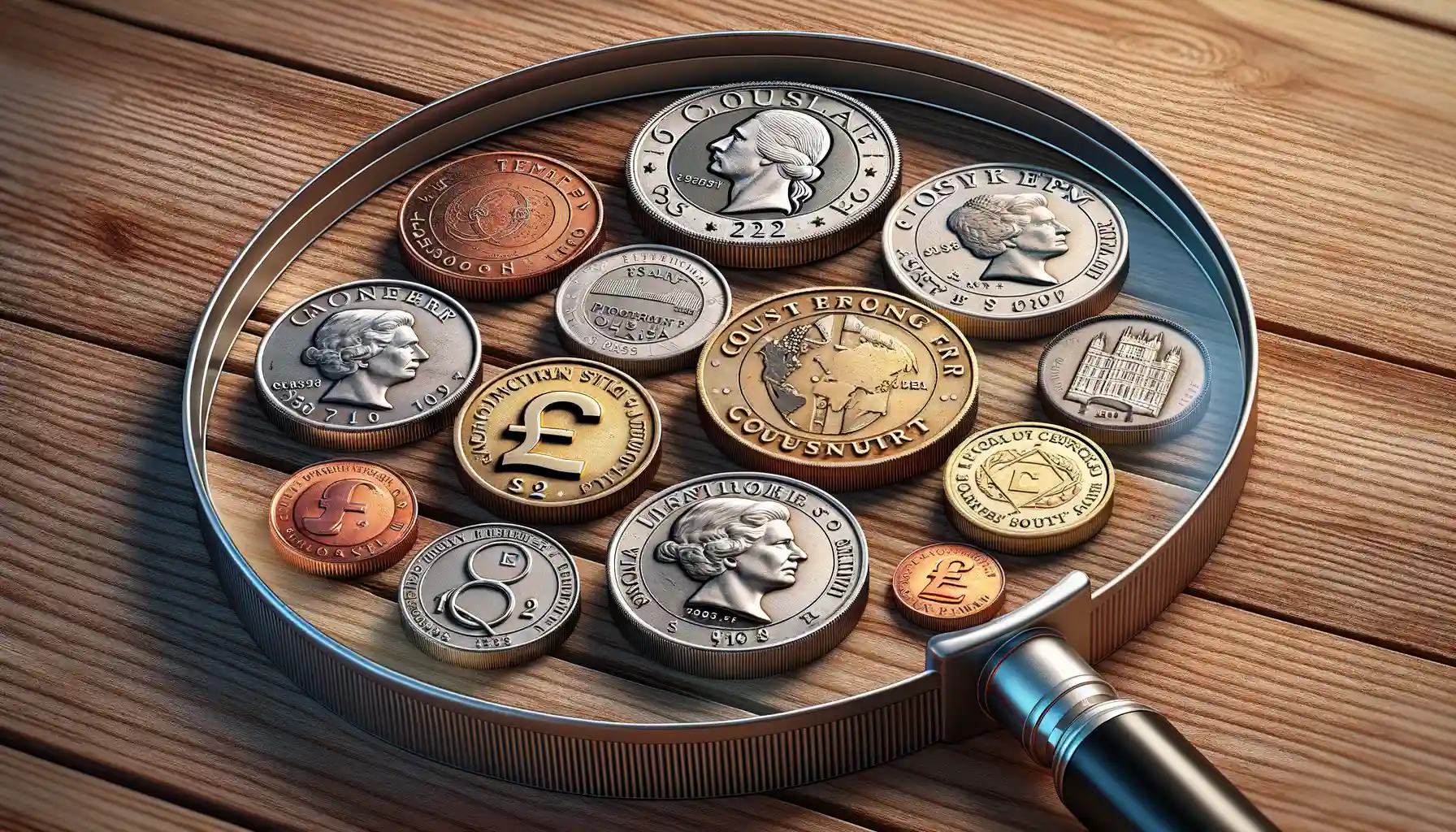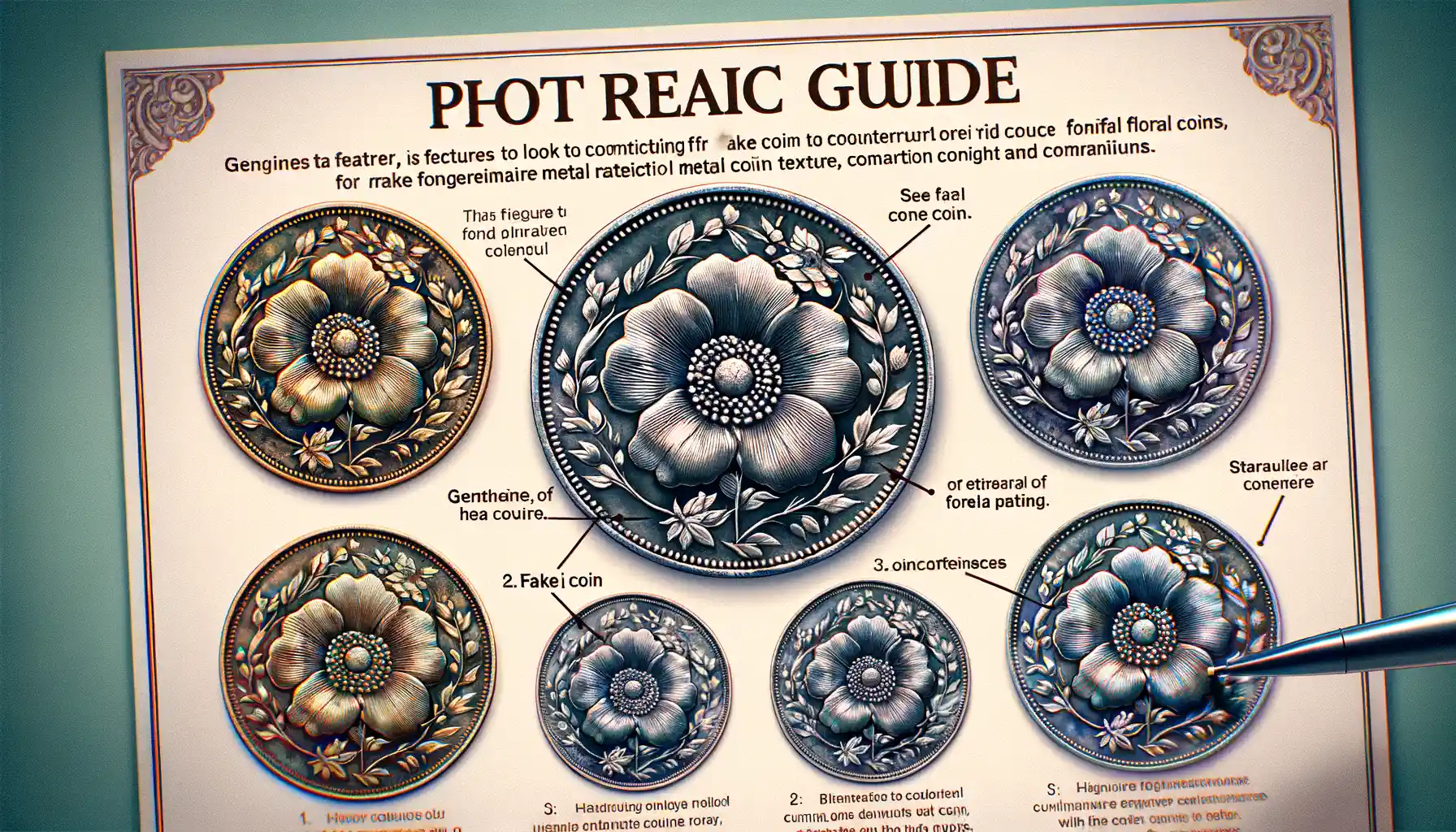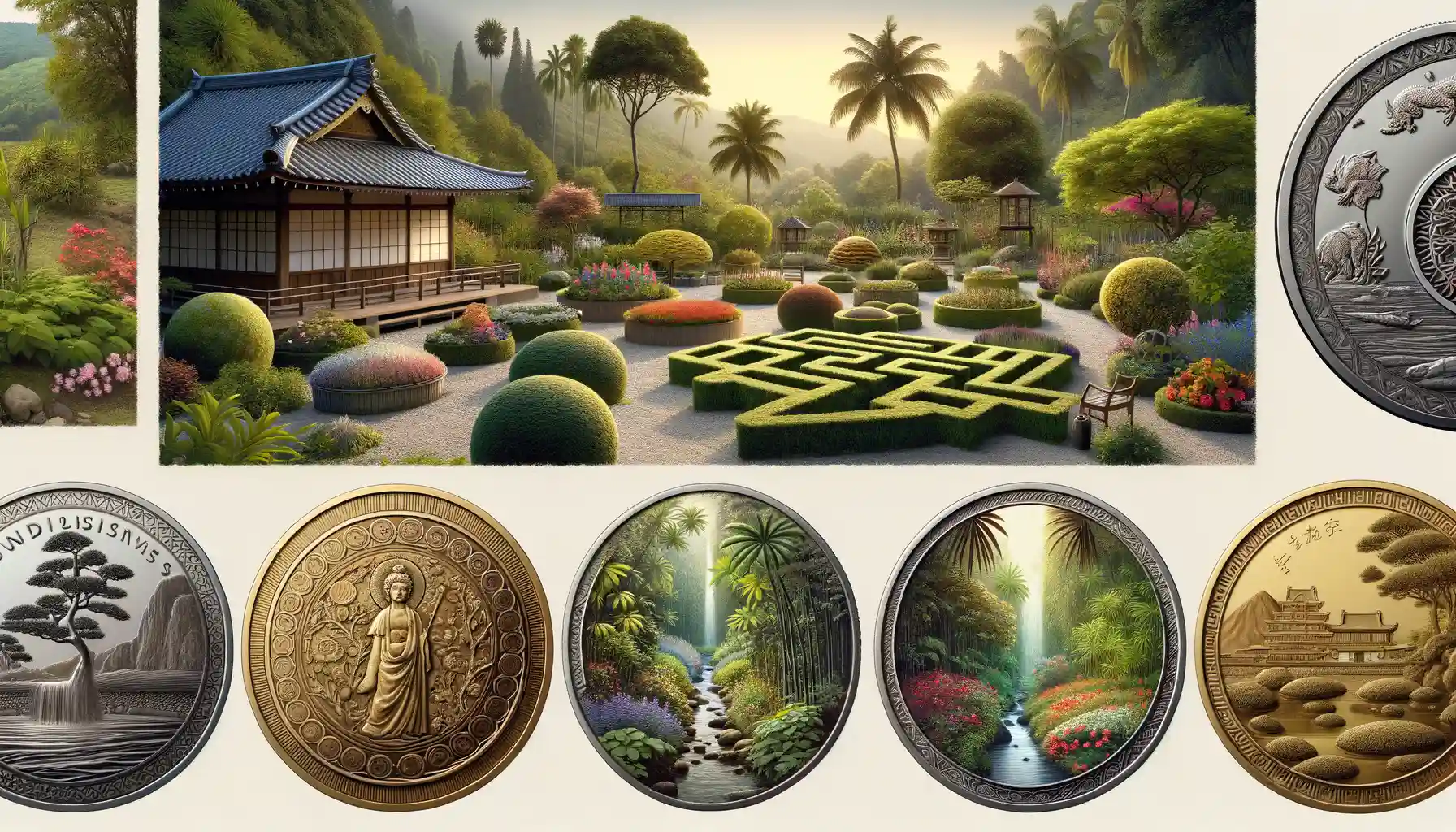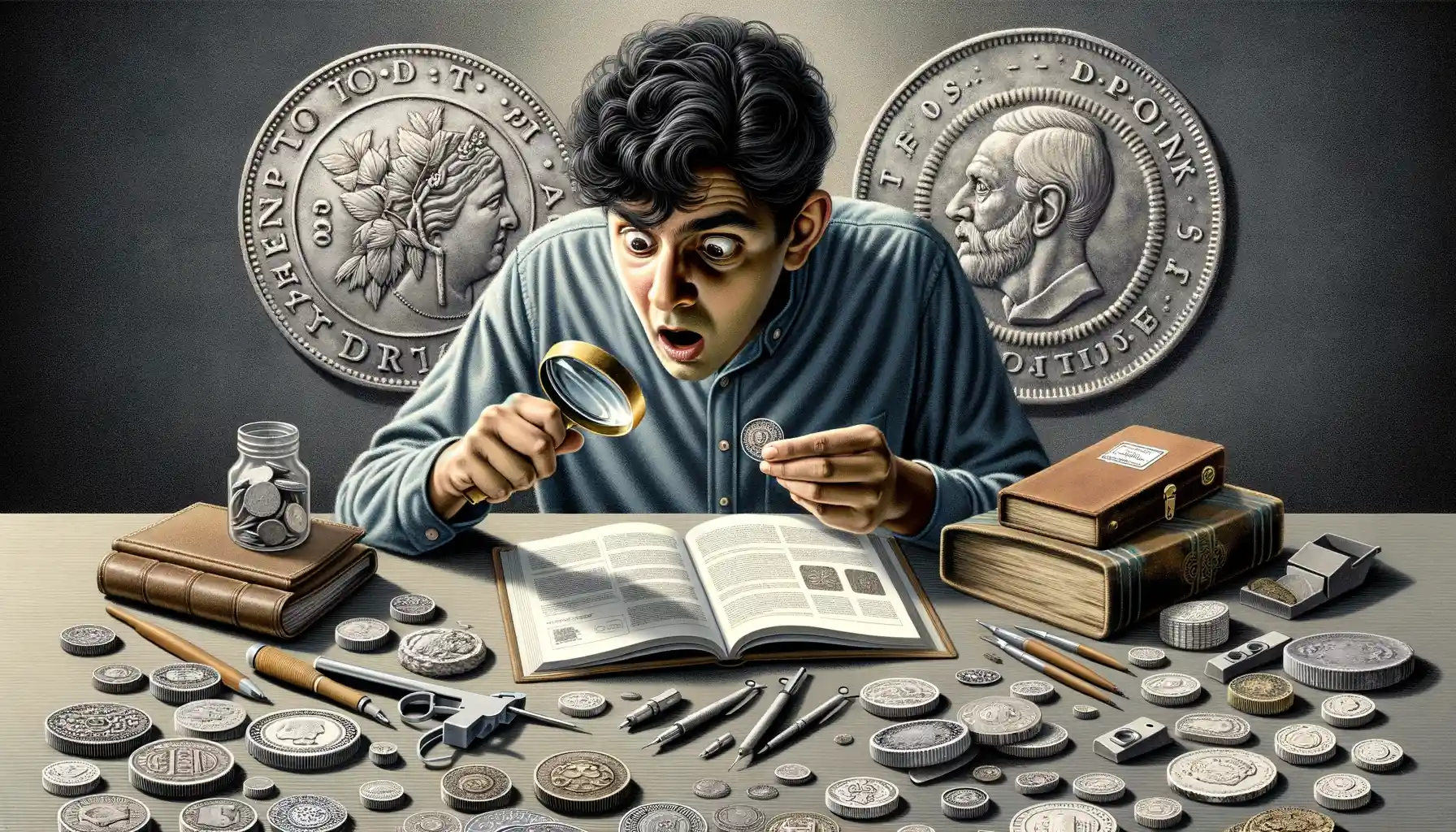Understanding the Basics of Floral Motif Coins
What Makes Floral Motif Coins So Enchanting?
Floral motif coins are like tiny works of art—each one tells a story in petals, leaves, and intricate designs. Collectors adore these coins for their elegance and symbolism, with patterns often inspired by nature’s most breathtaking blooms. From the delicate curves of a lotus to the bold majesty of a sunflower, these motifs are more than just pretty—they’re cultural and historical treasures.
Here’s a little secret: genuine floral motif coins have a certain “flow.” The design harmonizes with the coin’s surface, as if it grew there naturally. Fake ones? They often lack this organic quality, looking forced or awkwardly symmetrical.
Key Features of Authentic Floral Coins
When you hold an authentic floral motif coin, you’ll notice:
- Depth and Detail: Genuine coins boast fine engraving that plays with light, creating shadows within the design.
- Material Quality: Solid metals with no uneven discoloration or strange textures.
- Consistency: The edge, weight, and overall feel align with the standard specs of the mint origin.
So, before dismissing a coin as fake, take a closer look—it’s all about appreciating those tiny details!
Common Signs of Counterfeit Coins

Subtle Clues Hidden in Plain Sight
Spotting a counterfeit coin is a bit like playing detective—you’ve got to train your eyes to pick up on the small things. Start by examining the floral motifs. Are the petals too sharp or oddly misshapen? Genuine coins often look like carefully crafted art, but counterfeits can appear rushed or awkward, as though somebody sketched them in a hurry.
The edges are another telltale sign. Run your fingers along the rim—does it feel uneven or rough? Minted coins have a precise finish that feels smooth and consistent, not like a jagged edge from an amateur replica.
What to Watch for Under the Surface
- Color inconsistencies: Real coins usually maintain uniform tones. If the coin shifts between dull and overly shiny areas, it’s time to raise an eyebrow.
- Weight differences: Hold the coin in your hand. Too light? Too heavy? Counterfeiters rarely match the exact weight of authentic coins.
- Strange wear patterns: Does the coin show unnatural wear, with some parts looking new and others suspiciously aged?
Trust your instincts if something feels “off.” Counterfeit coins often try to mimic, but they rarely master the fine details collectors treasure.
Step-by-Step Guide to Spotting Fake Floral Coins

Uncover the Hidden Clues
Picture this: you’ve just acquired a stunning floral motif coin, its intricate petals and curling stems catching the light. But something feels… off. Trust your instincts! Spotting a fake isn’t about luck; it’s about knowing where to look. Start by examining the details. Are the flower designs sharp and precise, or do they look fuzzy and rushed, like a bad sketch? Authentic coins often have an incredible level of craftsmanship.
Now, flip the coin—literally. The edges are another giveaway. Fakes often reveal themselves through uneven ridges or sloppy milling. Run your fingers along the edge. Does it feel smooth where it should be textured? A counterfeit may crumble under this simple test.
- Weight check: Real coins don’t skip their gym days. Use a scale to ensure yours matches the expected weight.
- Color matters: A genuine gold floral motif won’t have strange discolorations or overly shiny “bling.” Watch for unnatural hues.
Every coin tells a story, but some are whispering lies. You just need to know how to listen.
The Power of Light and Magnification
Sometimes, all you need to expose a faker is a strong beam of light. Hold the coin at different angles under direct light. Authentic floral motif coins will reveal minute details—the kind you’d expect from a skilled artist. Fakes? They tend to wash out or show pitifully shallow engravings.
A magnifying glass, or better yet, a jeweler’s loupe, can be your secret weapon. Zoom in on the petals of the flower design. Do they show tiny scratches that suggest rushed production? Or worse, do they seem overly smooth, as if a machine ironed out all the character? Remember, real blooms have imperfections that tell their story; forged ones? Not so much.
Tools and Techniques for Authenticating Coins

Essential Tools for Detecting Genuine Coins
When it comes to verifying the authenticity of your cherished floral motif coins, having the right tools at your side is like equipping yourself with a detective’s magnifying glass. Start with a high-quality loupe or magnifying glass. These aren’t just for jewelers—under 10x magnification, subtle details leap to life, exposing imperfections in counterfeit designs.
Next on the list? A sturdy digital caliper. This tool measures the diameter and thickness of your coin with pinpoint precision. Even a millimeter’s discrepancy from the standard dimensions could spell trouble. Don’t overlook the value of a digital scale, either. Weight deviations are tell-tale signs that something’s amiss.
For those who love going the extra mile, a magnet can reveal hidden secrets. Genuine coins are rarely magnetic, so if your floral motifs cling tightly to one, you’ve got a red flag waving.
- Some coins glow unnaturally under ultraviolet light due to modern counterfeit coatings.
- Real silver or gold has a unique “chime” when struck gently—counterfeits? Not so much.
Techniques That Bring History to Life
Authentication isn’t just about gadgets; it’s also about a trained eye and a touch of intuition. Study every petal on your floral coin’s design. Counterfeits often lack the elegant flow of genuine artistry—and sometimes even miss minor details, like tiny veins on leaves. Feel the surface with your hands too. Is it rough where it should be smooth? Genuine coins often have a uniform texture to them.
Lastly, don’t underestimate the power of provenance. Cross-reference your coin against trustworthy catalogues or auction records. The joy of holding a piece of history is magnified when you *know* it’s authentic.
Protecting Your Collection from Counterfeits

Why Counterfeit Coins Are the Enemy of Every Collector
Imagine spending years curating a collection of exquisite floral motif coins, each piece a little time capsule of history and artistry. Now, picture a counterfeit sneaking in—an uninvited guest at your private treasure trove. Heartbreaking, right? Protecting your collection is like guarding a rare garden; even one invasive weed can spoil the bloom.
Counterfeits aren’t just harmless imitations; they’re meticulously crafted traps meant to deceive even sharp-eyed collectors. They dilute the value of your collection and can tarnish its authenticity. One quick safeguard? Always document where you source your coins. A clear provenance isn’t just a paper trail—it’s a shield against fakes.
Practical Ways To Keep Fakes Out of Your Collection
Ready to fortify your defenses? Start here:
- Invest in airtight storage solutions: Secure cases prevent wear and make tampering obvious.
- Use specialized coin authentication tools: A magnifier, scale, or digital caliper can help spot inconsistencies in size and weight.
- Build relationships with trusted dealers: They’re more than vendors; they’re allies with insider knowledge.
Treat your collection like a fortress. After all, every authentic coin deserves a safe haven where its beauty can shine untarnished.



